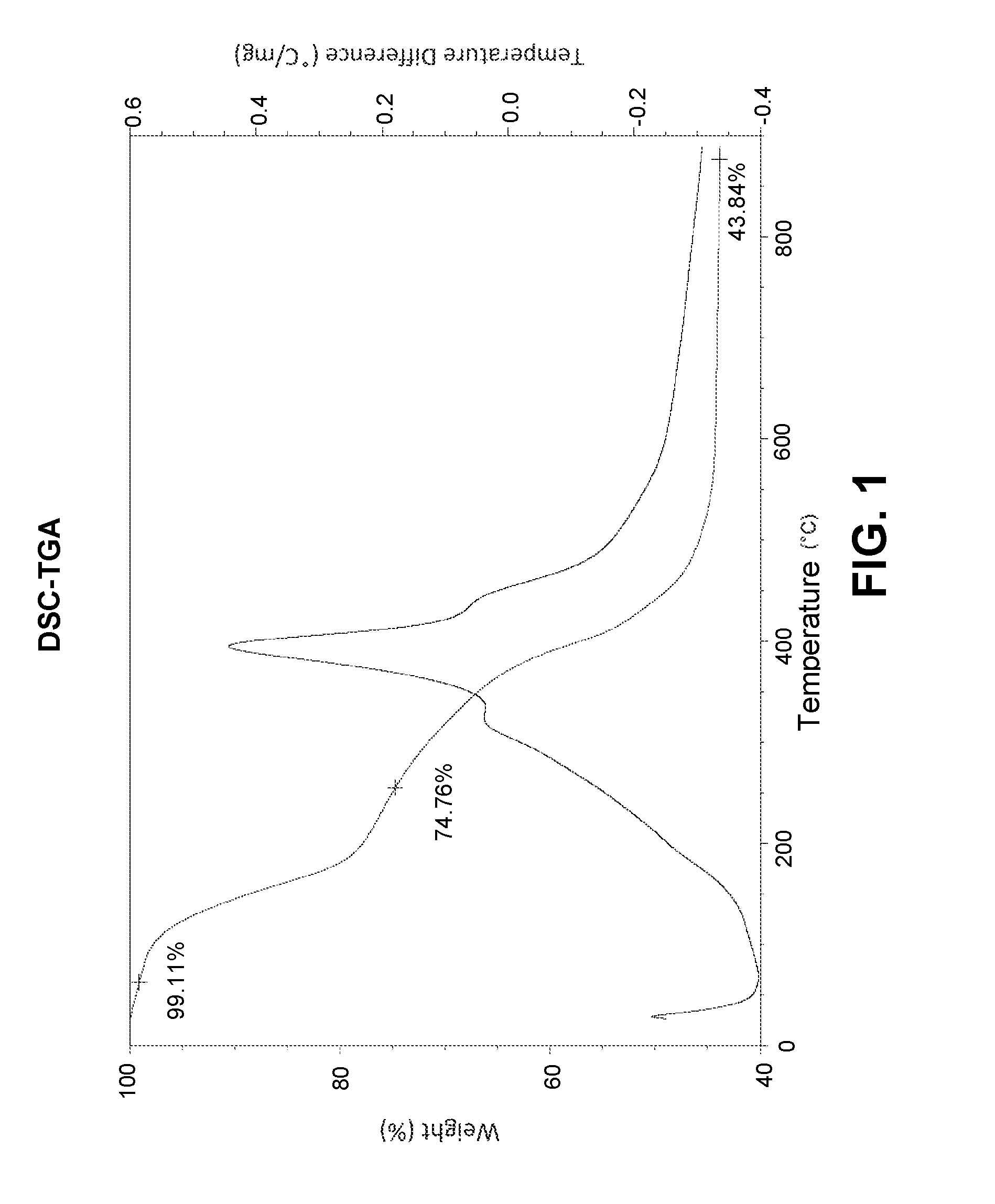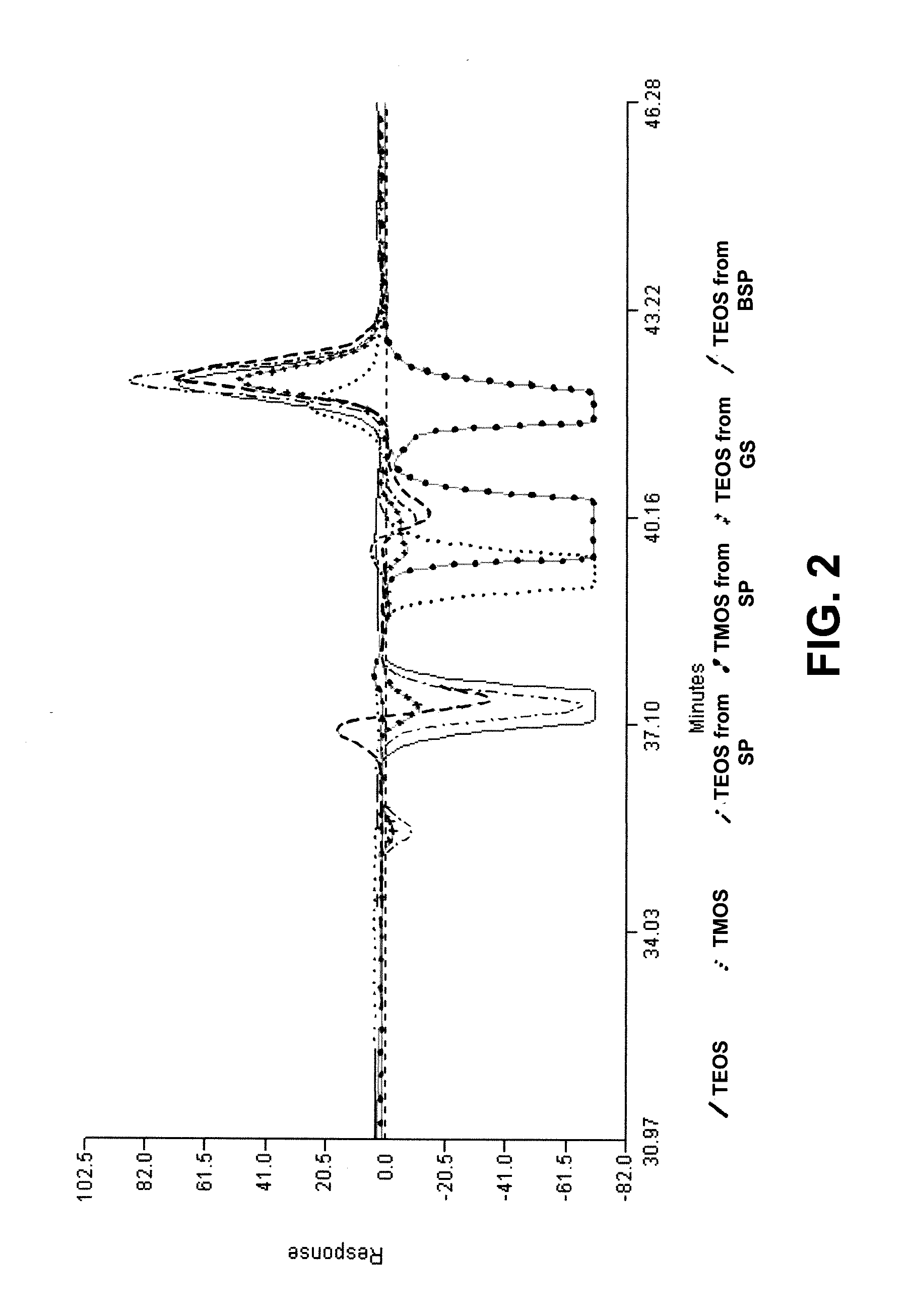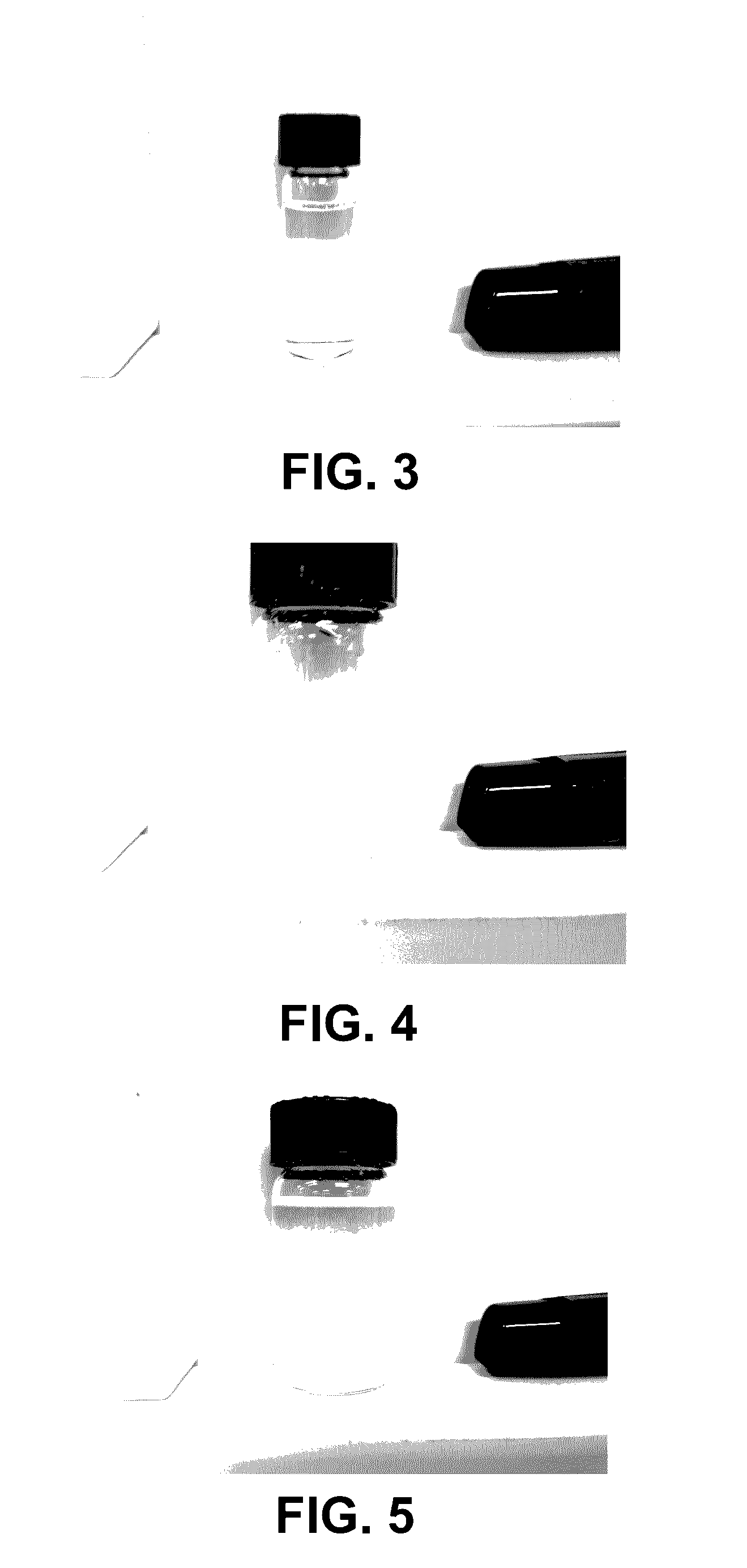Synthesis method of alkoxysilanes
a technology of alkoxysilane and synthesis method, which is applied in the field of alkoxysilane synthesis method, can solve the problems of unreasonably high cost, unfavorable equilibration, and inability to easily polymerize using the same chemistries, so as to reduce the amount of roh used, improve the rate of equilibration, and reduce the effect of roh
- Summary
- Abstract
- Description
- Claims
- Application Information
AI Technical Summary
Benefits of technology
Problems solved by technology
Method used
Image
Examples
example 1
2-methyl-2,4-pentanediol Dissolution Reaction Just Run, ˜45% Conversion
[0072]RHA (1000 g, 85 wt. % silica content, 14.16 moles of silica) was dissolved in 10 L of 2-methyl, 2,4-pentanediol (hexylene glycol, HG) and placed in a 22 L flask, equipped with a heating mantle and a mechanical stirrer. Then, catalyst (10 mol. % NaOH) dissolved in 900 mL of ethanol was added to the reaction flask. The reaction mixture was slowly heated and refluxed for 2 days. Then the distillation started—first the ethanol / water was distilled out, and then the temperature was increased to start the SP / HG distillation. SP was distilled out and fresh HG added. The distillation was carried about 40 h and ˜9 L of distilled SP was collected, and then worked up (addition of hexane and three water washing steps). After addition of hexane, the solution formed two immiscible layers (diol and hexane) that were separated prior the washing steps. Then the hexane layer (containing the spirosiloxane product) was washed w...
example 2
Ethylene Glycol Dissolution Reaction Just Run With HG Added 40% Conversion.
[0073]RHA (630 g, 7.87 moles of silica) was placed in a 12 L flask, equipped with a heating mantle and a mechanical stirrer. Catalyst (10 mol. % NaOH) was added with 7 l of EGH2 and distillation started. Silica dissolution rates are seen in Table 1.
TABLE 1Percent silica dissolved (by LOI) from processed RHA with 10 mol.% NaOH.Time, hSilica Dissolution 628.2%1231.7%1835.4% 24*37.1%*At 37% dissolution, the reaction was converted to synthesize spirosiloxane (SP).
[0074]Then, 3.5 L of 2-methyl, 2,4-pentanediol (hexylene glycol, HG) was added and spirosiloxane distillation commenced. SP was distilled out (˜3 L) and collected, and then worked up (addition of hexane and three water washing steps). After addition of hexane, the solution formed two immiscible layers (diol and hexane) that were separated prior the washing steps. Then the hexane layer (containing the spirosiloxane product) was washed with water three tim...
example 3
Conversion of I to TEOS
[0076]
[0077]To a flame dried 500 mL round bottom flask equipped with magnetic stirrer under N2 were added ˜25 mL of activated 4 Å molecular sieves, 10 g (0.038 mol) of Si(2-methyl-2,4-pentanediolato)2 (I), and 400 mL of dry 200 proof ethanol. The reaction mixture was allowed to stir for 1 h before addition of 2.5 mL (0.015 mol) of TFA. The reaction was left to stir at room temperature for 24 h. It was then filtered to remove molecular sieves and precipitated solids formed during the reaction process (ROP / silica byproducts). Then 400 mL of hexanes was added to the filtered solution and washed with water (3×150 mL) to remove TFA and diol. The pH of the resulting hexanes solution was then checked for neutrality. The hexanes solution was then dried over Na2SO4 and filtered. Then the solvent was removed in-vacuo, resulting in a colorless oil of Si(OEt)4 as determined by GPC, yield 5.2 g, 65%.
PUM
| Property | Measurement | Unit |
|---|---|---|
| temperatures | aaaaa | aaaaa |
| temperatures | aaaaa | aaaaa |
| activation energy | aaaaa | aaaaa |
Abstract
Description
Claims
Application Information
 Login to View More
Login to View More - R&D
- Intellectual Property
- Life Sciences
- Materials
- Tech Scout
- Unparalleled Data Quality
- Higher Quality Content
- 60% Fewer Hallucinations
Browse by: Latest US Patents, China's latest patents, Technical Efficacy Thesaurus, Application Domain, Technology Topic, Popular Technical Reports.
© 2025 PatSnap. All rights reserved.Legal|Privacy policy|Modern Slavery Act Transparency Statement|Sitemap|About US| Contact US: help@patsnap.com



